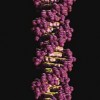What’s in a Weed?
 If you’re a geneticist, it’s likely that your experiments are not on humans, even if you’re studying human diseases. This is a concept we spend a great deal of time discussing with the 5th-8th graders who visit the DNA Learning Center. It’s hard for a youngster, and many adults for that matter, to understand how a worm or a bug might have anything in common with a human, nonetheless anything worth studying!
If you’re a geneticist, it’s likely that your experiments are not on humans, even if you’re studying human diseases. This is a concept we spend a great deal of time discussing with the 5th-8th graders who visit the DNA Learning Center. It’s hard for a youngster, and many adults for that matter, to understand how a worm or a bug might have anything in common with a human, nonetheless anything worth studying!
The most mystifying of the model organisms is the plant. How could a scientist possibly learn anything about human genetics from a plant? One popular model from the plant kingdom is a weed from the mustard family found all around the world called Arabidopsis, or Thale Cress. It has a small genome, and as such, was the first fully sequenced plant genome! In addition to studying plant traits useful for agriculture, such as light sensitivity and flowering, there are other important cellular traits being studied in plants.
What most students don’t realize (until they are actually asked to think about it) is that all cells perform basic functions, and these basic functions are required for life. Interestingly enough, mutations in genes involved in the regulation of the most basic cell functions such as cell division, are the culprits in diseases such as cancer. Telomeres, structures that cap chromosomes, are found in plant and animal cells and also play a potential role in basic functions like cell division. Recent Arabidopsis research may shed light on the relationship between telomeres and cancer!
(http://www.sciencedaily.com/releases/2009/10/091026162538.htm)
So the next time you’re out weeding the garden, take a moment to consider this: that plant you’re uprooting may contain valuable information!
| Print article | This entry was posted by admin on November 4, 2009 at 3:18 pm, and is filed under DNA From The Beginning. Follow any responses to this post through RSS 2.0. You can leave a response or trackback from your own site. |




